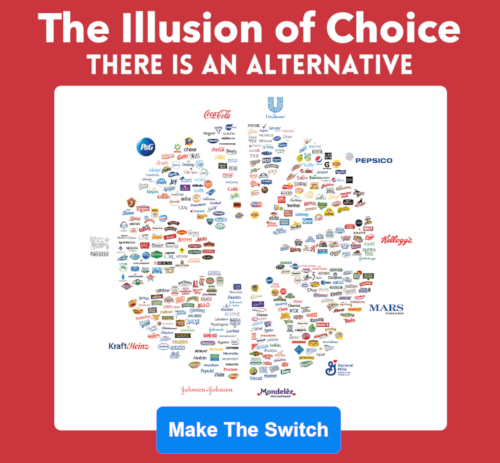Over the past several months, I’ve been pelted with the same question over and over again: “If America’s public education system is broken, what should our education system look like?”
In the education reform and school choice movements, we often reply that education is “whatever you as the parent want it to look like,” yet this, while true enough, is an inadequate response. Parents, teachers, and society as a whole needs a vision of what we could be moving toward—not just away from.
We education policy and pedagogy wonks love to spend hours poring over education policies and proposals that shape statewide approaches to everything from tax and financial frameworks to cultural edicts on social-emotional learning, critical race theory, and LGBTQ+ sexualization of children.
We spend far too little time with “boots on the ground” observing what does and doesn’t work in the day-to-day classroom, which often affects students far more than this year’s slate of state education policies.
I’ve spent the past few years visiting hundreds of different schools with dozens of different education styles. From charter schools that are public schools with a corporate coat of paint to Hasidic homeschool cooperatives that teach all subjects at once, and every other kind of school in between.
Almost all of those schools have a bevy of problems to overcome: Hundreds of thousands of American students are woefully behind on reading and math; behavioral problems have reached crisis points for students and teachers alike; a teacher-to-student ratio that’s often much too large; and a lack of communication between the home and the classroom has stressed cooperation at the expense of the student.
Some of the most potent salves to soothe these wounds have reemerged in the form of classical and highly individualized education settings.
Classical education, which sharpens the expectations of every student under tried-and-true curriculums, has become enormously popular in the past few years as students have made up considerable ground in literacy and math fluency under the tutelage of those environments.
Homeschooling and microschooling have also seen a major resurgence in popularity among all demographics. It’s difficult to imagine a more individualized and personal education approach—with those who have the most intimate knowledge of their kids’ strengths and weaknesses leading their instruction.
Unfortunately, not every parent is able to make the sacrifices necessary to homeschool, with financial, career, and time constraints keeping the option out of reach. A quality classical education, too, is restricted by the lack of infrastructure prepared to facilitate it to large numbers of students. We simply don’t have the number of classically trained teachers and appropriate environments to meet the demand.
These natural restrictions can be solved by a method of education that is not only a well-tested practice over the past 3,000 years, but is already sufficiently staffed with a host of experts we might tap into for instructors: the master/apprentice model.
The master/apprentice model involves a seasoned professional, or “master,” taking on an inexperienced student, or “apprentice,” to teach him the skills and knowledge required for a specific trade or profession. This model has proven to be incredibly effective in a wide variety of industries, from carpentry to medicine.
Once a student reached a societally accepted level of literacy in reading, math, history, and science, he would “take on” with a master in a trade or academic field. This master would train up one to a few apprentices every day—employing the same “teaching by observing and doing” that parents used with daily tasks throughout toddlerhood.
This application allows for an expertise in a specific trade while garnering secondary skills via necessity, rather than simply learning from textbooks and lectures. This hands-on experience is invaluable and can make all the difference when it comes to securing employment after graduation.
Additionally, the mentorship provided by a master allows for a more personalized approach to learning. The master can provide one-on-one guidance, tailoring the teaching to the specific strengths and weaknesses of the apprentice. This not only improves the apprentice’s overall understanding of the subject matter, but also fosters a sense of camaraderie and mentorship that lasts a lifetime.
We already use this master/apprentice model in postsecondary environments to great effect. Almost every teacher will tell you that his or her time as a student teacher, working under an experienced classroom instructor, taught him or her far more than undergraduate lectures. The same has been echoed for ages when nurses and doctors recall their time in clinicals.
The trades have retained the structure and nomenclature of the master/apprentice model. It’s no small wonder that the trades turn around new journeymen (the apprentices that have graduated from young, fumble-fingers days) more quickly than most other professions.
Moreover, the master/apprentice model is a win-win situation for both parties involved. The apprentice gains valuable knowledge and experience, while the master has the opportunity to pass on his or her expertise to the next generation of professionals. This can also lead to a sense of satisfaction and fulfillment for the master, knowing that he or she is contributing to the growth and success of his or her industry.
Is this a catchall solution? Absolutely not. It’s a vision of what education in the United States could be, based on readily available data that shows a high success rate at solving many of our teaching and learning problems—and is therefore something that should be advertised to parents and policymakers alike.
In an era in which we are finally able to move beyond calling for school choice and education freedom policies, it’s time to focus our efforts toward painting a picture of what learning could look like. Classical education, homeschooling, microschooling, and the master/apprentice models are the answer.
Have an opinion about this article? To sound off, please email letters@DailySignal.com and we’ll consider publishing your edited remarks in our regular “We Hear You” feature. Remember to include the url or headline of the article plus your name and town and/or state.
The post What Education Should Look Like: Master and Apprentice appeared first on The Daily Signal.
- The Sneaky Way Deep-State Bureaucrats Advocated Censorship of Americans in 2020 - November 13, 2023
- There Is No ‘Second America’ if This One Fails - November 13, 2023
- ‘Zero Appetite’ in Israel for Cease-Fire With Hamas, Embassy Official Says - November 13, 2023
JOIN US @NewRightNetwork on our Telegram, Twitter, Facebook Page and Groups, and other social media for instant news updates!
New Right Network depends on your support as a patriot-ran American news network. Donate now


